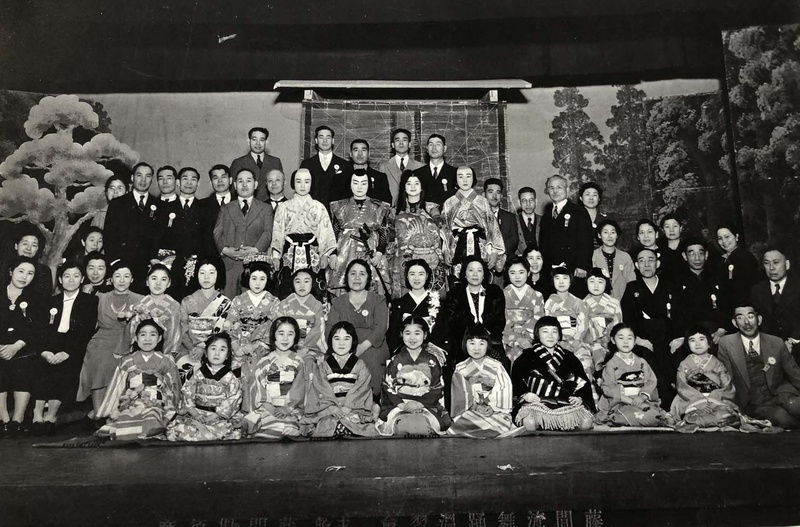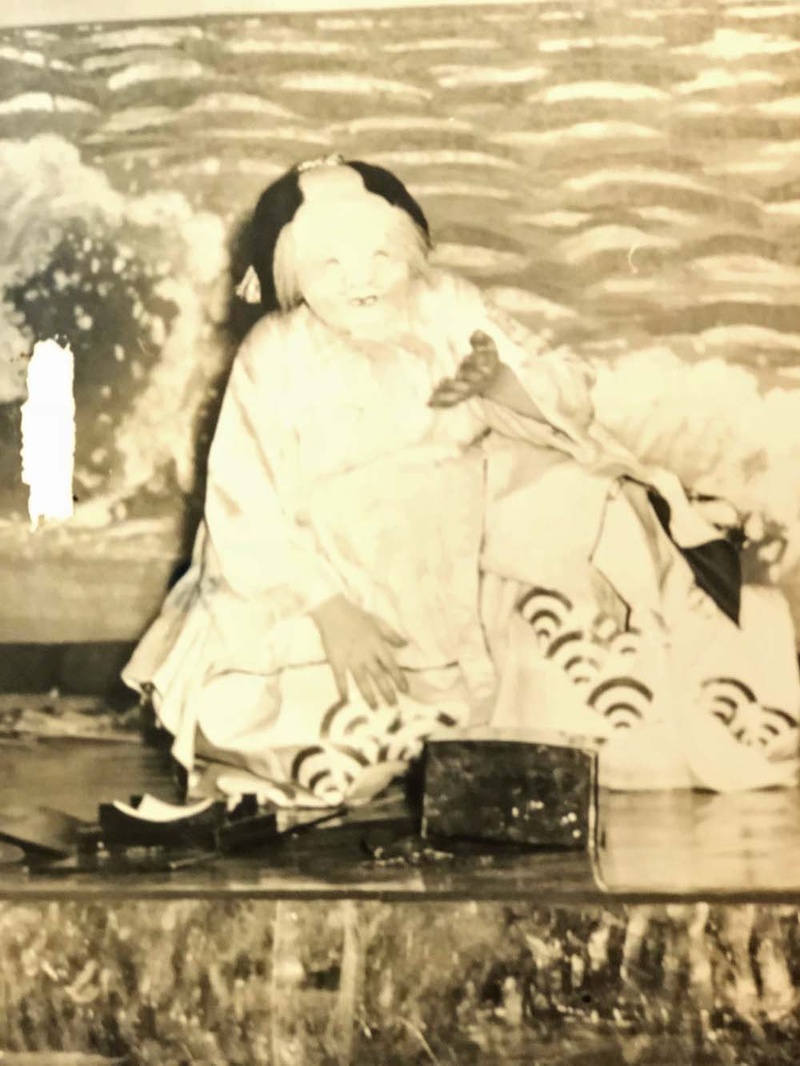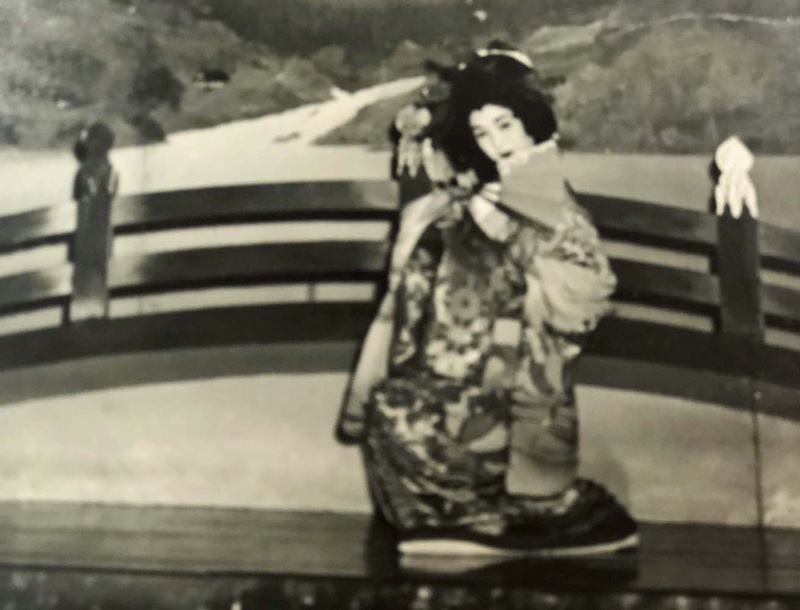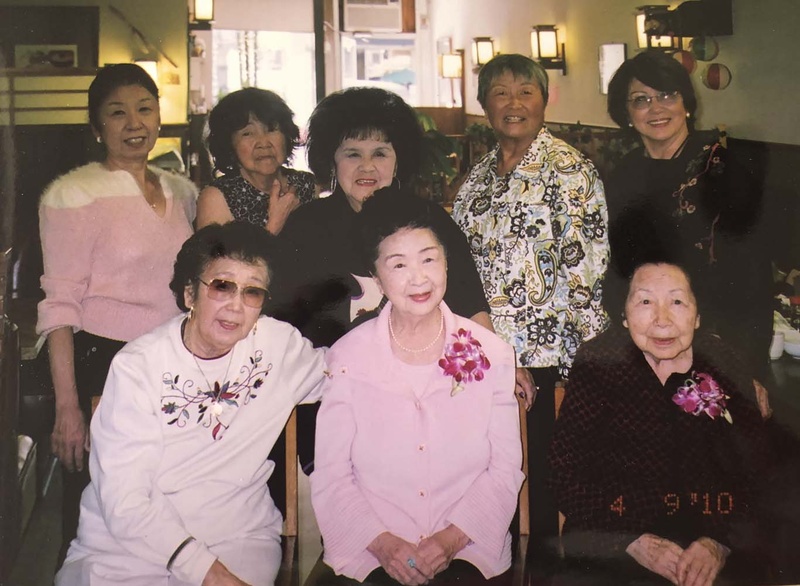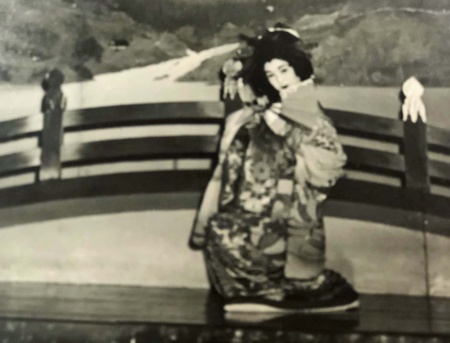At 100 years-old, Madame Fujima Kansuma, along with her daughter, Fujima Kansuzu, will choreograph the Ondo dance for this year’s Nisei Week Festival Parade in Los Angeles. Many of Madame Kansuma’s former students will travel from all parts of the USA and Japan to dance, one more time, for their beloved “Osho-san.”
An icon of our time, she should be mentioned in the same conversation as Margot Fonteyn, Baryshnikov, and Nureyev. She is a master of kabuki dance, and is known for her unique style performed with restraint, yet with passion. She also combines exquisite centuries-old techniques with the imagination and flair of contemporary theater. We in America are given the rare opportunity the see the best of Japanese classical dancing through the work of Kansuma. Her work exemplifies creativeness and freedom for innovative expression that only an American of Japanese descent could choreograph. Daring to be different and imaginative, yet true to the traditional skills that she learned while studying for many years in Japan, Madame Kansuma performed and taught with beauty, elegance, and passion.
The essence of her dance was its simplicity; the unsaid statements that encouraged our imagination to somehow look at the mysteries of life, to encourage and persuade us to find the essence of nature; to leave a sentence forever incomplete. That is the skill, the magic, and power of her art.
Through the years from 1937 to the present, over 1,000 dancers have been fortunate enough to be students of our beloved “Osho-san.” It’s hard to believe she has just celebrated her 100th birthday! She still lives her life with the incredible energy of a young woman. Sitting next to her, listening to her speak and teach (yes, she is still teaching!) her students, I am reminded of the first time I saw this beautiful woman 80 years ago.
As one of her first, and one of her oldest students, I was 5 years-old, when I became a student of Madame Kansuma in 1937. I am now 86 years-old. “Osho-san,” an endearing title that we all call her, had just returned from Japan in 1937 to open her first dance studio in the Little Tokyo neighborhood in Los Angeles.

Remembering back to those days before World War II, I think of the many young girls, from ages 5 to 18, who were also students of Madame Kansuma. I recall with fondness the memories of dancing in Little Tokyo before WWII, at the Kawafuku Restaurant, at Yamato Hall, the Kenjinkai picnics at Elysian Park, at the Hollywood Bowl, on navy ships docked in San Pedro, and at Buddhist Temples as “far away” as Gardena and Oxnard.
Madame Fujima Kansuma taught Japanese odori in America’s concentration camps. Her students included Yukino Okubo Harada who is 96 years-old and I believe her oldest living student. Another student, Michiko Iseri, also taught odori at Heart Mountain, Wyoming. After her release from the camp, Michiko went on to dance in Broadway’s The King and I as their youngest dancer.

Miyoko Watanabe was one of Madame Kansuma’s outstanding pre-World War II students. Miyoko Watanabe traveled to study kabuki in Japan, became a “na-to-ri” and later toured the United States in the first performances of the Grand Kabuki Theater of Japan. She later taught odori in New York City and was a visiting professor of kabuki at Columbia University before she retired. Madame Fujima Kansuma encouraged Miyoko and many others to pursue their studies of dance in Japan to attain a natori certification. To receive a natori certification, a dancer must master several classical dances. Through all the years of Madame Kansuma’s teaching, over 48 of her students attained natori status.
Another student, Midori Yoshida, at the young age of 8, was known for her dance as an “old woman” in Kudan-no-Haha – the story of an elderly mother walking miles to visit her son’s grave who died in the war. Midori was experienced beyond her young age, dancing incredibly like an old woman. Midori would bring tears to the eyes of the elderly through her sweetness, charm, and graceful dancing. All of Fujima Kansuma’s dancers were taught to dance with emotion as well as a deep sense of history and respect for our heritage.
All of these and many more of Madame Kansuma’s students were known for their excellent technique which was perfected by enduring long hours and years of hard work, and for their continued study of kabuki odori.
During the war years being incarcerated in America’s concentration camps, I was fortunate to be in the same camp as Madame Kansuma. Fujima Kansuma students danced at the Santa Anita Assembly Center and also in Rohwer, Arkansas. In Rohwer, I remember dancing with Mickey Gotanda and Harumi Shibata. We traveled and performed with other Kansuma students in Jerome, Arkansas.

I remember, my mother stayed up late into the early morning hours, hand-sewing my kimono under a single small light bulb, for the dance of Tabigasa-Dochu. The material was from the Sears & Roebuck mail order catalog. I still have that kimono put away in my suitcase of Japanese kimonos. The Japanese dance performances lifted the morale of the Issei and Nisei who had to live behind barbed wire fences. Madame Kansuma was determined to bring some relief and happiness to the elderly, and the audience was grateful for her dedication to continue teaching Japanese culture to the younger generation through the odori and kabuki plays.
Madame Fujima Kansuma’s imaginative choreography for stories of old Japan and the contemporary music of Ryu-ko-ka, came alive on the stage. I learned so much about the history of the Japanese culture through her dances. Today, some of these dances and stories can be seen on the internet: Okaru-Kampei is from the popular play Chushingura or 47 Ronin. Genroku-Hanami Odori is a dance from the Tales of Genji. Tabigasa Dochu is a love song of the famous battle of Sekigahara, from 1600, before the Tokugawa period. To see her perform Konya Takao, Urashima, and Tange-Sazen was unforgettable as she danced for the Issei in the concentration camps. The inner strength and passion of this dance brought back a sense of power to their feelings of helplessness.
Osho-san was our inspiration as well as our life teacher. She would always remind us to “hold yourself strong to bear the unbearable;” to “honor and thank everyone who helps you; always be kind and generous to the elderly and less fortunate.” Her compassion is surpassed only by her generosity.
She is one for the ages. There will never be another “Osho-san” for me. Madame Fujima Kansuma has devoted her life to the art, beauty and elegance of Japanese dance. While also teaching her students that perfection is never achieved; we must continually strive to improve ourselves each day and never take anything for granted. To live life by doing what you love every day, and love all those around you. That must be the secret of her long, healthy and happy life.
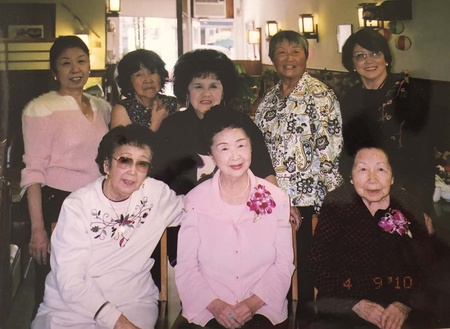
© 2018 June Berk


